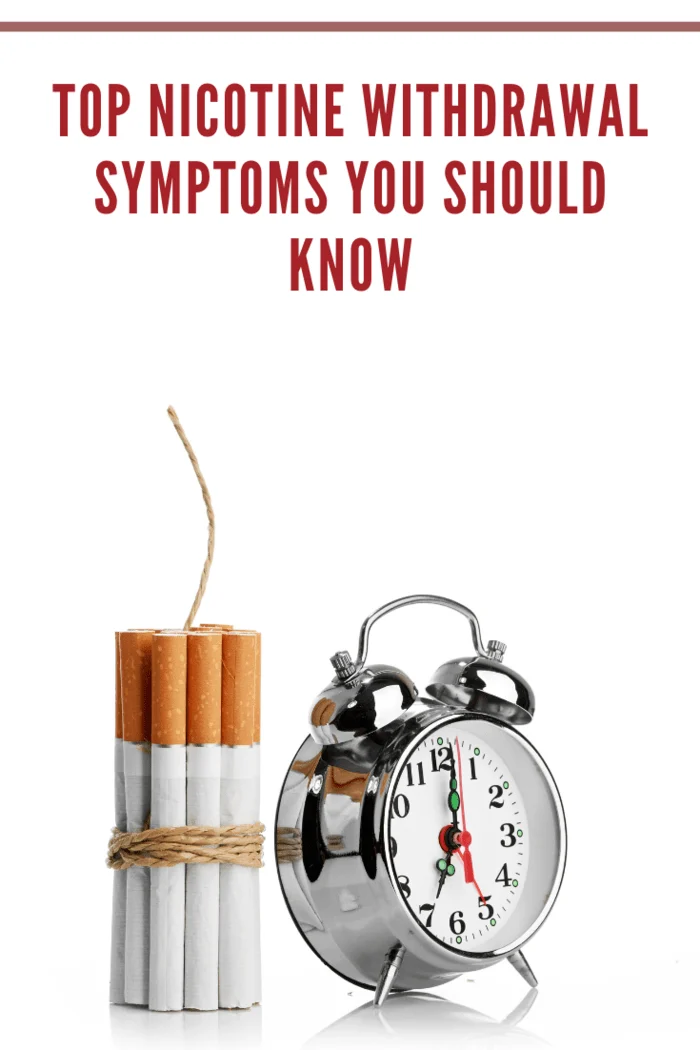According to research, nicotine withdrawal symptoms can scare smokers from quitting smoking. That’s why many smokers are hesitant about undertaking a nicotine smoking cessation plan. In most cases, it comes with distressing experiences. It can also trigger a myriad of physical as well as physiological symptoms. However, this shouldn’t scare you from embarking on this important journey. You can manage these symptoms and stay healthy with the right tips and tricks. And one of the best ways to do it is to understand the nicotine withdrawal symptoms. From here, you will devise ways of managing them. The following are common withdrawal symptoms you should understand.
Pro Tip: if you cannot quit smoking immediately, go for smokeless solutions. Purchase a tobacco free dip and manage your smoking habits in style.

You Will Experience Nicotine Cravings
One of the most common symptoms associated with nicotine withdrawal is nicotine craving, says Very Well Mind. Nicotine receptors typically cause the cravings you experience in your brain. When the brain is suddenly deprived of nicotine, it automatically stops releasing dopamine, the ‘feel-good’ hormone, which your body has become accustomed.
Smoking urges refer to psychological responses in which the human body craves something to which it has become tolerant. They can be extremely uncomfortable, but if you’re determined to quit smoking, you’ll have to bear with the feeling. Chewing nicotine gum or going for a walk might help.
Weight Gain
The urge to smoke is more like replacing cigarettes with food. Every time you smoke, the nicotine you inhale triggers your muscles and liver to produce glucose while altering your body’s response to insulin.
People who’re trying to quit smoking often experience a drop in their blood sugar. And this increases their desire to consume carbs and other sweet foods to satiate this unexplained hunger.
As a result, they end up gaining unnecessary weight, especially during the first three months.
Sleep Disturbances Are Common
Sleep disturbances are very common among people trying to withdraw from nicotine addiction. Research has shown that rapid eye movement can be severely affected when one quits smoking. And this causes a lack of sleep and persistent tiredness during the day. You can take CBD to counter sleep disturbances. Buy CBD gummies today and manage your nicotine withdrawal symptoms.
You May Experience A Persistent Cough
After people quit smoking, they’re more likely to develop a persistent cough. But coughing at this point is a sign that their lungs are getting better. When you smoke, the cilia projections in your airways’ linings become immobilized and ultimately flatten out.
Once you quit smoking, the cilia return to their normal shape, pushing the toxic substance out of your lungs. To relieve this symptom, consider taking a lot of water. Humidifying the air and taking some honey can also go a long way in easing any throat irritation.
The Bottom-Line
If you can quit it, you can manage the nicotine withdrawal symptoms, says Healthline. You can deal with both physical as well as physiological nicotine withdrawal symptoms. It starts with having a clear mindset. It then boils down to embracing consistency. It stops at managing your symptoms. Understand these symptoms. Have patience. Be confident. Also, discipline is key. The above are common nicotine withdrawal symptoms you are likely to encounter.
